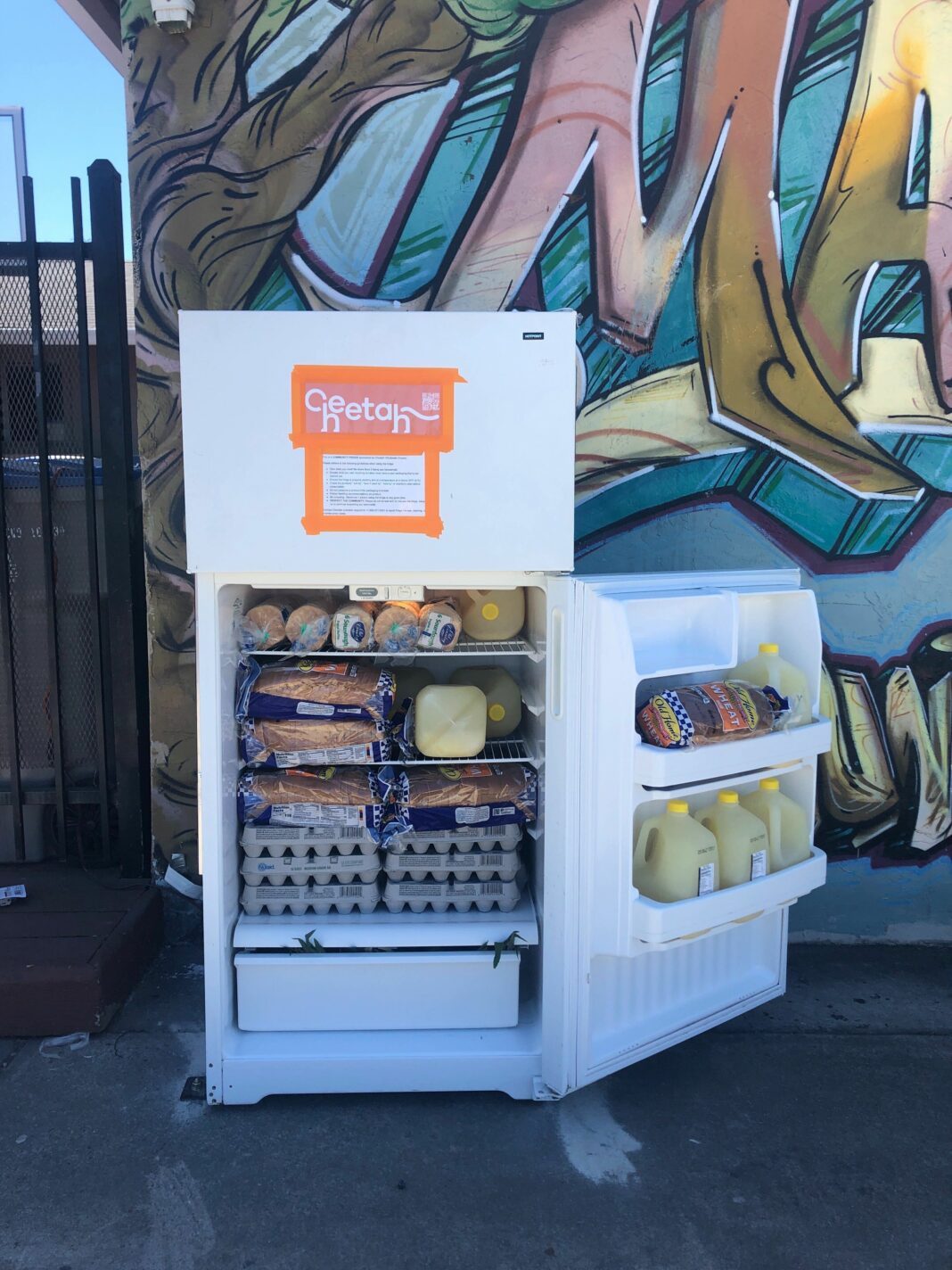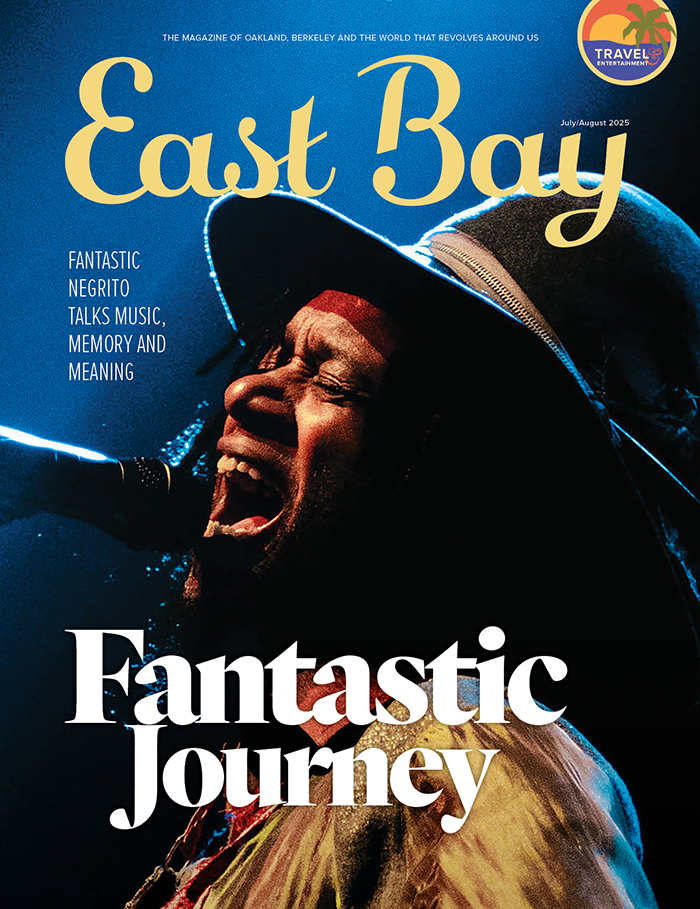As of early August, over 130,000 people in the Bay Area had lost their jobs due to the Coronavirus shutdown. We’ve all seen the shuttered restaurants, cafes and shops in our neighborhoods. The long term impacts of the pandemic are numerous, but unemployment has exacerbated one issue in particular: hunger. There were already 870,000 food-insecure people in the Bay Area before the Covid-19 crisis (more than the entire population of San Francisco), and need has only grown. As food banks and food-justice organizations work to meet increased need, some community members have taken it upon themselves to end food insecurity in their neighborhoods, one fridge at a time. Several groups, including a grassroots community organization and a grocery startup, have installed free fridges in the East Bay (and beyond), to feed those in need, anonymously, shamelessly and for free.
The concept of community fridges is simple but radical: people set up an empty fridge on the sidewalk, in a vacant lot or anywhere else they can get permission and access to an outlet. Then, they fill it with food, cleaning it regularly and restocking it when necessary. Community members are encouraged to add their own contributions to the fridge, but more importantly, to take anything they might need. The idea first gained traction in New York earlier this summer, as people across the boroughs began strategizing ways to meet the needs of the city’s massive food-insecure population.
The unique advantages of community fridges—their accessibility, the choice they give to those in need and the ability of the community to sustain the fridge—appealed to Na’ama Moran, founder and CEO of the B2B grocery startup Cheetah (based in Pleasanton). Normally, Moran’s company serves primarily restaurants, but as some clients have shuttered during the crisis, Moran was left with inventory that she couldn’t use. She didn’t want it to go to waste, so she partnered with a local nonprofit, CityTeam, to set up a community fridge on Washington Street in Oakland and another in San Jose, both decorated with murals by local artists and monitored and cleaned regularly.
Cheetah is in the process of opening a third fridge and plans on more locations.
“We were really excited about the fridges because they allow us to get to what we usually call in business ‘the end user,’ except these aren’t users, they’re people in need,” Moran said. “But they might not be comfortable going to a food pantry or a soup kitchen. Maybe they are far away, or they don’t have the means to get there. So we want to make sure food gets to people wherever and whenever they need it.”
Usually Cheetah’s fridges are stocked with milk, meat, produce, juice and bottled drinks, depending on availability. Cheetah isn’t the only community fridge project in Oakland, though—a grassroots group of volunteers called the Town Fridges has set up 8 fridges around Oakland which usually stock pantry staples, water, produce and even prepared meals. Currently, there are 3 fridges in West Oakland, 1 Downtown, 1 in North Oakland and 2 in East Oakland.
The Town Fridges usually avoid raw meat, but any other grocery item is game—and anyone can donate. Their guiding motto is “Scarcity is a myth.” Organizers say “there is an abundance of food to share, and we keep us fed.” No one person runs the Town Fridges project, and anyone can get involved, by volunteering to clean fridges and check their stock, or just by dropping off food. On their Instagram, the team posts the food available in each fridge and what the fridges are lacking. Information about the Town Fridge project is translated into at least 5 languages. The team plans to keep the fridges throughout the year and beyond the pandemic, saying, “We are in the process of creating the world we deserve every day.”
The idea behind community fridges isn’t to replace existing food programs, but to expand access for people who might not be able to get as much help as they need from government benefits or food pantries.
“Services are networks,” Moran said. “Food pantries and soup kitchens are like nodes in that network, where people have to go to them to get food. The fridges get as close to the people in need as possible. A recent study found that 79 percent of food-insecure families were already receiving SNAP, demonstrating the need for more options for ending hunger. Some people may be embarrassed to visit a food pantry due to stigma, especially young people.”
There is no one perfect solution for hunger and food insecurity; it’s one of the most complex issues our community faces. But giving food-insecure people the means to get food with dignity is a great first step. Moran and organizers like her hope that community fridges will continue to pop up all over the Bay Area and beyond.
“I just want this project to grow. I hope that soon, there will be fridges everywhere, and anyone can help themselves,” she said.











